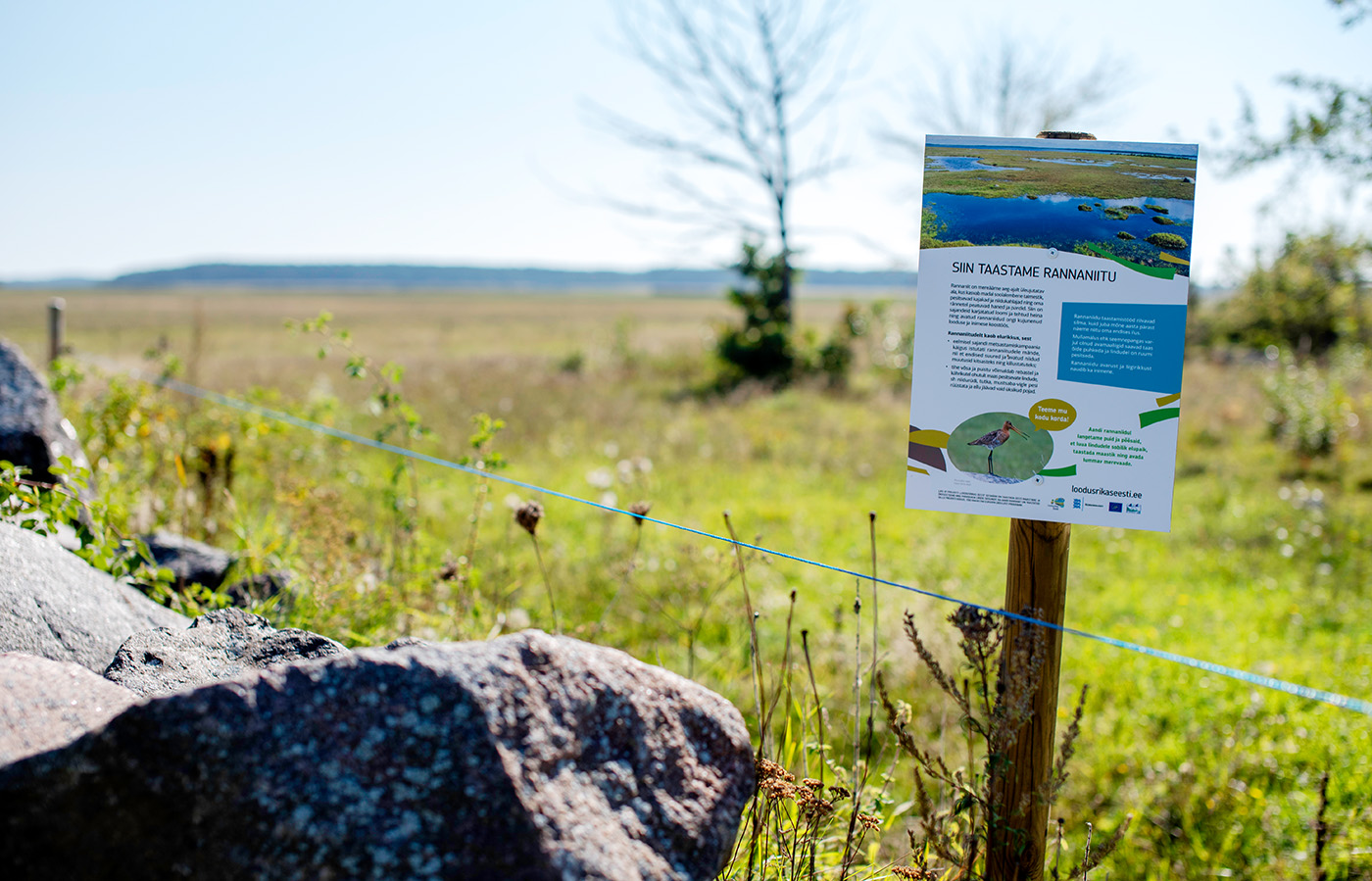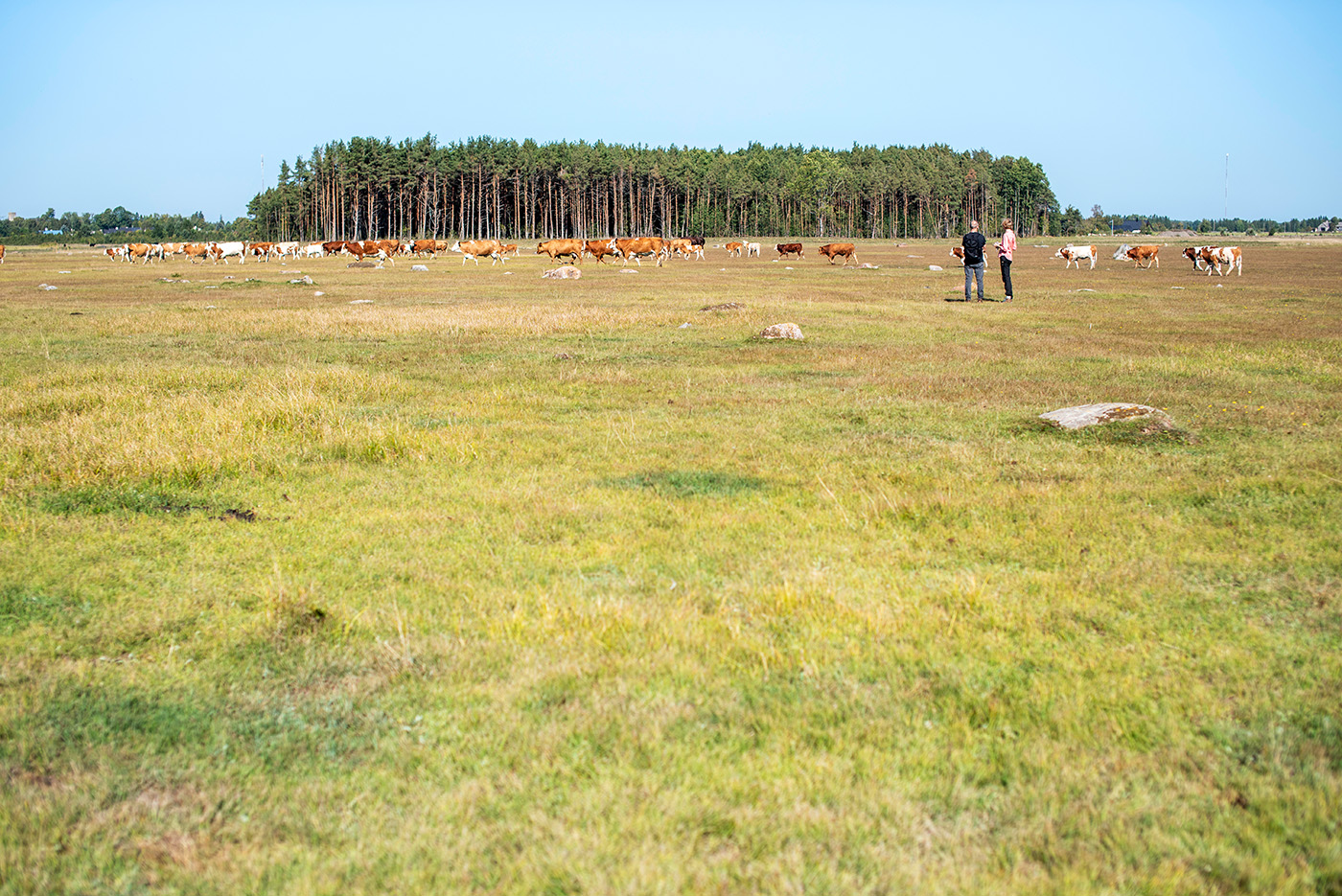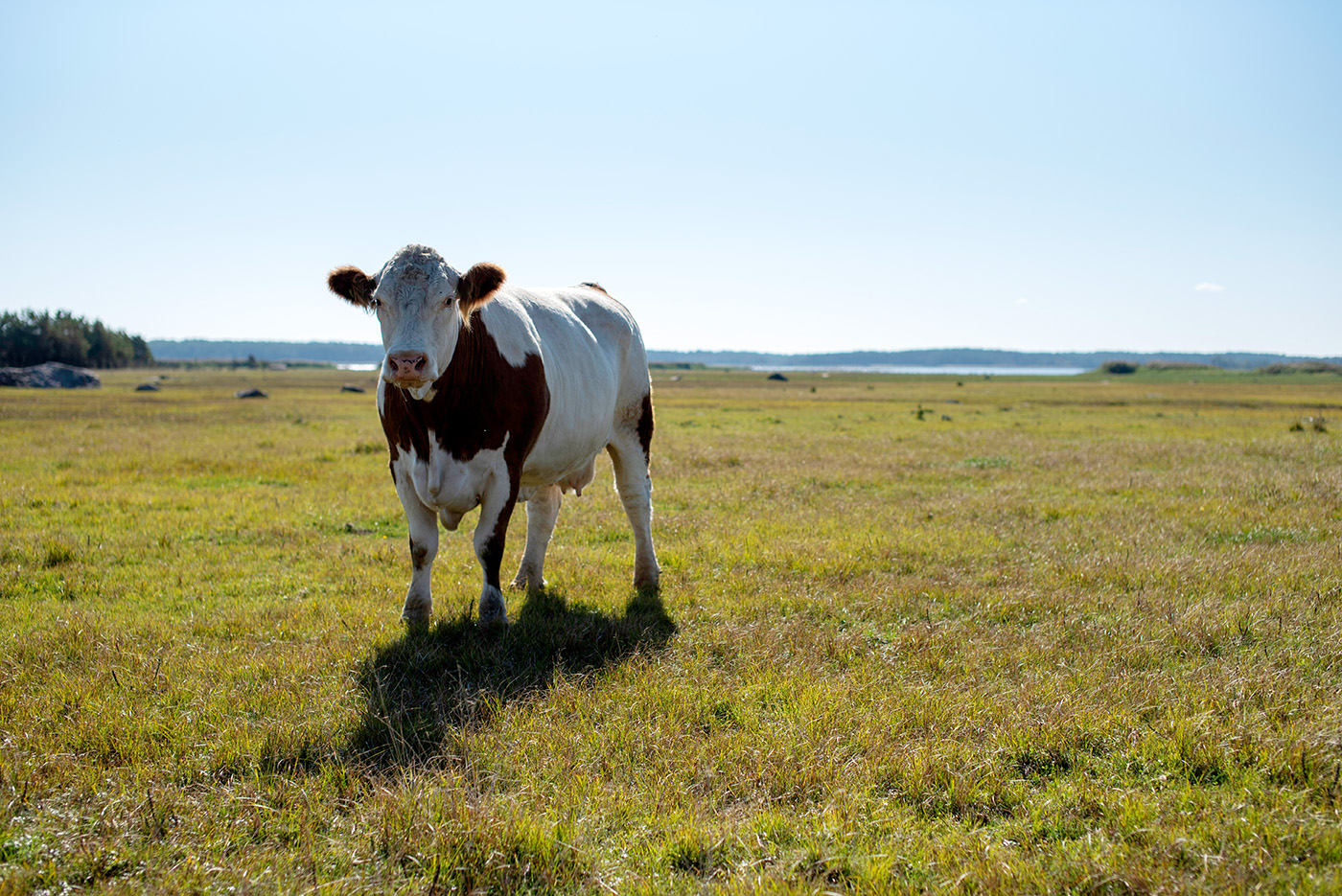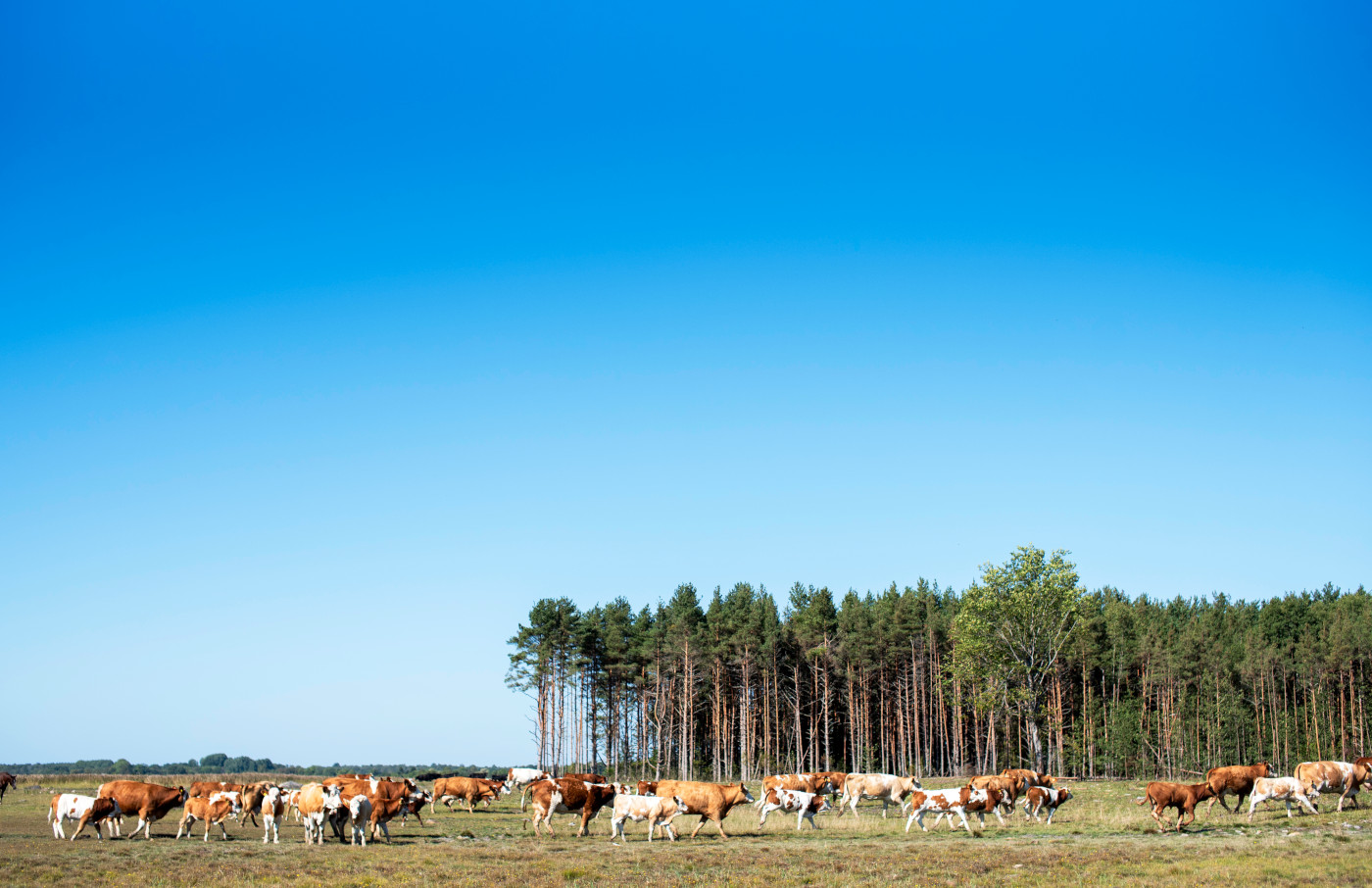December 4, 2024
Kaidi Tingas
Semi-natural grasslands must be restored and maintained in a way that makes them economically profitable
One of the aims of the LIFE IP “ForEst&FarmLand” project is to restore 20 coastal meadows in Hiiu County, Saare County, and Lääne County. This includes, among other things, the felling of trees and shrubs, restoration of water regimes, removal of reeds, and the limiting of the population of small predators that threaten waders nesting on coastal pastures. This is a considerable challenge, as there are more than 300 areas to be restored and over 240 owners involved. Fortunately, more than 60% of landowners are willing to cooperate with conservation efforts. In total, 400–450 hectares of coastal meadows will be restored by 2029.
Islander Tõnu Kaptein is one of those who has expanded his coastal pastures over the years, and he also participates in restoration work through his family business. He not only takes action, but also thinks about how to encourage waders to nest on the coastal meadows again and increase numbers at the expense of the overgrown, neglected heritage meadows. A coastal meadow functions as an ecosystem and provides a habitat for coastal species only when it is as massive and diverse in form as possible.
When it comes to his coastal meadows, Tõnu emphasises that it’s more about management than maintenance, but this requires an understanding of nature and the processes that operate within it.
Tõnu and his family are valued members of the community, whose actions are kept track of and whose opinions are listened to. Tõnu is always ready to talk to others about the importance of coastal meadows – the area maintained by his family is not only the Lahe-Kassari Landscape Reserve in Käina, but also an internationally important bird area, meaning the way in which he manages his meadows is also of global importance.
Tõnu has well-thought-out proposals for those who make agricultural policy. Tõnu and the Environmental Board also used to go to court – the islander did not give up easily, and now some things are written more clearly in laws and regulations. Thanks in great part to Tõnu, farmers who apply for NIIT support from ARIB to maintain inherited meadows also receive additional funding to improve the species on heritage meadows by removing unwanted vegetation, scrub and sod.
To date, OÜ Adoranna has restored about 250 ha of grazed coastal land. A total of 10.8 hectares have been restored through previous tenders and this year’s tender. Plans are in place to restore a further 20 hectares of coastal meadows in the coming years. Wherever possible, we aim to carry out the restoration work ourselves. In addition, RMK will also restore its own lands for its herd.
As the beach area between Käina Bay and the settlement has become a more open and attractive stress-relieving location through maintenance and restoration work, it has given the younger generation the opportunity to engage in tourism. This includes the popular summer and winter café days. Tõnu has handed over more of the management responsibilities to his son, Erki, but is ready to help at any time.
Tõnu, what has been the most challenging aspect of your extensive experience of managing coastal pastures?
From a management point of view, we have always been growing. We introduced the existing coastal pastures in the 1990s and, over the years, we have expanded our management to include new grazing areas.
Perhaps the most difficult thing is achieving the integrity of the areas, as well as a mutual understanding with the surrounding landowners and the state. There have been situations where the land has become fragmented and there has been unmaintained land between our properties, but we have still striven to maintain integral management of the land. There is not enough arable land in Hiiu County, and coastal pasture makes up a large proportion of the arable land that is cultivated here.
What has brought you the most joy in all these years?
This is a very difficult question. It is certainly gratifying that we have managed to survive in a situation where many farmers who started keeping animals 30 years ago have given up. It is also encouraging that young people have the vision and the will to move things forward.
A lot of time has been spent arguing with tradespeople and going to court. At first, it seemed that I was fighting a losing battle, but in retrospect, it feels like the fight was worthwhile and advanced the restoration and maintenance of heritage meadows. Thanks to the Environmental Board and the ARIB, many things have become simpler and more straightforward.
What advice would you give to people who want to restore and care for their heritage meadows?
Firstly, it is important to recognise that the management of heritage meadows cannot consist of endless restoration and maintenance activities alone; but must be based on economic activity. Only in this way will entrepreneurs survive and the biodiversity of coastal meadows be preserved. It is important to consider the long-term future, perhaps even over a period of 30–50 years, and to think about what will happen, for example, when the state no longer provides operating support.
The islanders have a folktale about keeping cows: ‘In spring, a man from Tu...la is bragging that he has done well – spring is here, the hay is gone, and the cow is dead!’ We can’t let the same thing happen – with the project having ended, the cows being dead, and the only positive being that at least the grant doesn’t have to be repaid’;)
A lot of work needs to be done to maintain the condition of the areas. If one is considering getting animals for a longer period of time, it is important to remember that they will need to be fed, looked after and cared for all year round.’ This is the case even if the ‘maintenance requirements’ have been met for that year. Consider what would happen if, for example, a wolf came to harass a flock of sheep.
To be economically successful, the area must also be large enough; there is no point in creating an area of just a few hectares. It is also important that the businesses are family-run or that the people involved share the same mindset. It would be very difficult to manage with only temporary agency workers. For the past five years, our son, Erki, and daughter, Kairi, have been fully engaged in and responsible for our daily activities. Of course, we will consult and discuss, but the final decisions are made through them.
What changes have you seen in nature while working on your pastures?
We must recognise that people are part of nature, and that local people must adapt their activities to their local environment. Nature cannot be protected indefinitely, and excessive nature conservation can place a heavy environmental burden on areas outside of protected areas. The whole must be seen in everything. The focus must be on plants, birds, and humans alike.
Just as the whole world is changing, nature is also undergoing major and rapid changes, which are unfortunately mainly due to human action – or sometimes inaction. It is precisely this inaction that has destroyed many valuable heritage meadows over the years.
There are also outdated restrictions that longer apply today, but no official dares to remove them! For example, outdated hunting restrictions have destroyed the habitat and population of another species.




